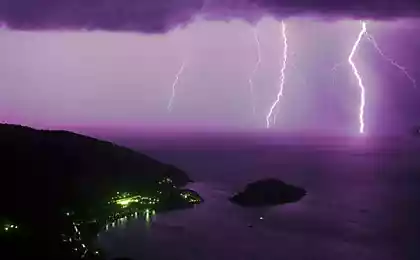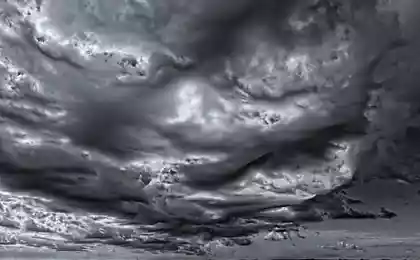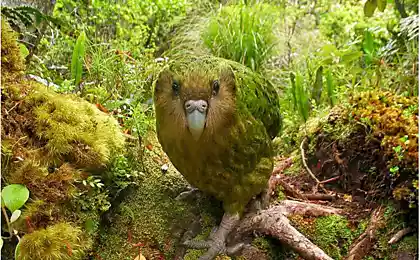850
10 rare phenomena of nature
Much of what we see in the natural world, is taken for granted. Of course, we can admire the sunset or zasmotretsya some clouds, but for the most part, the mystery of the world around us tends to go unnoticed. But nature can make things more spectacular than the sunsets or clouds.
Will 10 ph and a few letters.
taken away
1. Volcanic lightning
If someone asks you to name two of the coolest things you've ever seen in nature, your answer will be "volcanoes and lightning." Or perhaps, "lightning and volcanoes", but only these two options - that's a fact. But nature seems, is always looking for new ways to impress us, and that's why she went ahead and made the volcanic lightning reality. And yes, it looks exactly as it sounds - the lightning, which appear in the middle of a volcanic eruption. Scientists are not 100% sure why this happens, but the basic theory is that when a volcano erupts, it projects a positively charged dust into the atmosphere. These emissions react with the negative charges, whereby there is one) and the zipper 2) really cool picture.

02 Underwater icicles
When the sea surface freezes, for example, around the north and south poles, the process is such that on the lower side with pockets remain ice cold and salt water. This salt mixture is more dense than sea water underneath, and has a tendency to slowly sink to the bottom. The cold water below the cold salt mass freezes around it, when lowered, which leads to the appearance of giant icicles under ice surface. The technical name for this kind of thing - "ice stalactites," but there can be such a boring name for this exciting phenomenon? Hence the need for them to cool name "underwater icicle."
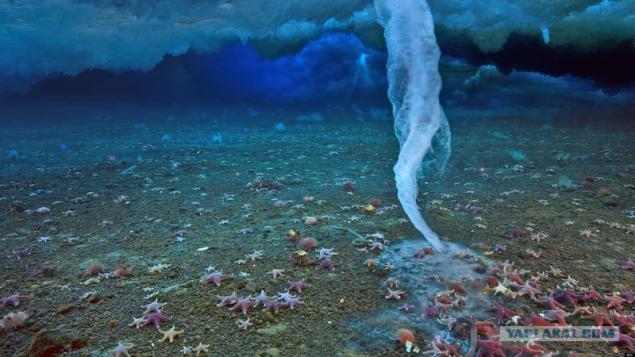
03 Penitentes
Here is another interesting ice formation, is very far from the submarine areas - high in the mountains. These prickly ice field called Penitentes, and each fragment can reach enormous heights - 4 meters. These frightening structure formed of snow in mountainous areas with low humidity, such as in the glaciers of the Andes. If conditions are right, the rays of the sun are hot, they really can sublimate the field of snow. This means that frozen water evaporates without ever becoming a liquid. This leads to small pockets in the ice, which due to its shape attracts even more heat. Sharp spikes - these are the areas of a snowy field, where the sun was not focused on the complete and utter destruction.
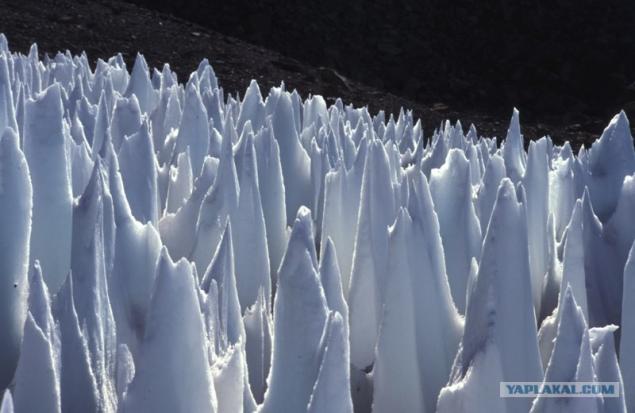
04Superyacheyki
If Superman was more powerful than any version of the flying man, the supercell stronger than normal storms.
Supercell are the most dangerous of the four main types of storms, but besides that it's scary, and then there is something to see. Fortunately, they are also very rare, and typically are in the central US spring. If you are ever lucky enough to come across such a thing, just remember one piece of advice: run the other way.

05 Fire rainbow
These colorful phenomenon often seen in the summer season in mid-latitudes, such as most of the United States. In fact, they are a great halo of refracted light, and, despite the name, does not have anything to do with fire, no rainbow. They appear only when the sun is at an angle of at least 58 degrees above the horizon, and when in the sky there are cirrus clouds, which are filled with plate ice crystals. The refraction of light is always parallel to the horizon, and due to the fact that the arc is very large, become visible only section, which is why it may look like clouds in the fire areas.
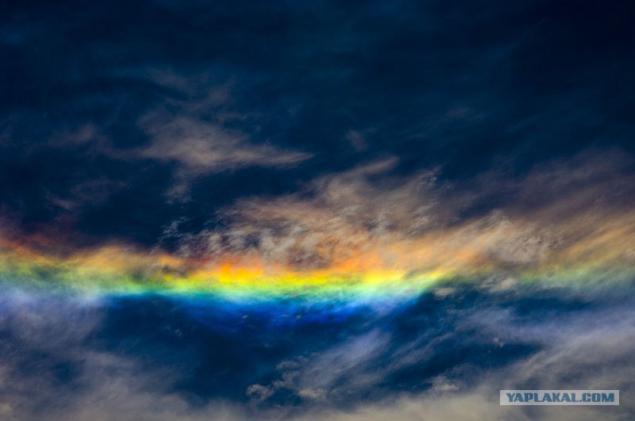
06Solnechnye dog
Here is another phenomenon associated with ice crystals in the atmosphere. As fiery rainbow, sun dogs are great glow in the sky as a result of the refraction of light, although in this case they seem to actually surround the sun. Sun dogs can be found on the two bright spots on either side of the glow. If these flash bright enough, they may look like three suns in the sky. And the good news is that it happens all the time all over the world, so that you can begin to see them if you look closely (especially when the sun is low on the horizon).

07Smerchi
Tornadoes also amazing, as their name: it is tornadoes that form over water. Because of this, they do not pose a serious threat, but if you happen to be in a boat, be careful, because these events can reach speeds up to 305 km / h. There is speculation that many mysterious shipwrecks, such as in the Bermuda Triangle, are simply the result of tornadoes. They can occur anywhere on the water, but it is especially common in the Florida Keys, where there may be 400 or 500 tornadoes a year.

08 Snow donuts
Do you remember as a kid when it was snowing, all tried to quickly roll a big snowball? Have you ever played in the snow, or sculptured snowmen. Nature has its own way of sculpting snow - snow donuts. This rare form is formed in the ideal conditions of temperature, during a snowfall or blowing snow. If part of the snow sticks together with the other part, the gravity and the wind do its part, and someone rolls himself. But in this case tend to collapse creates a donut shape, which can reach up to 66 cm in height.
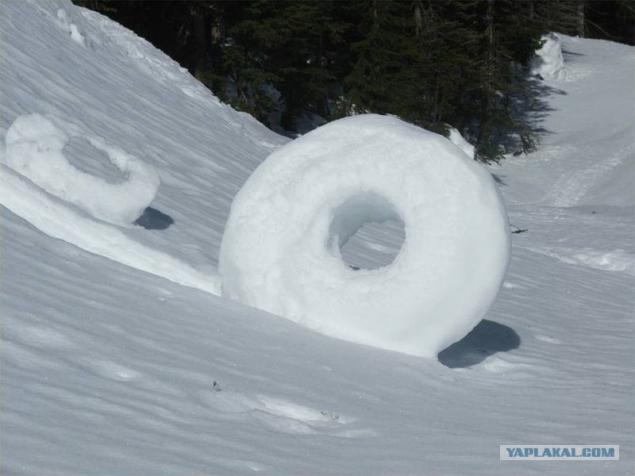
09 Layers of basalt
At some point, Basalt looked at myself and realized that if he wanted to be noticed, it must be activated. And then organized into columns of basalt.
It should be recognized that on the surface it does not seem so impressive - the bars are not very interesting - but if you look all together, it's a beautiful sight. Unique education are the result of the fact that the lava flowed and cooled, perpendicular to the main flow.
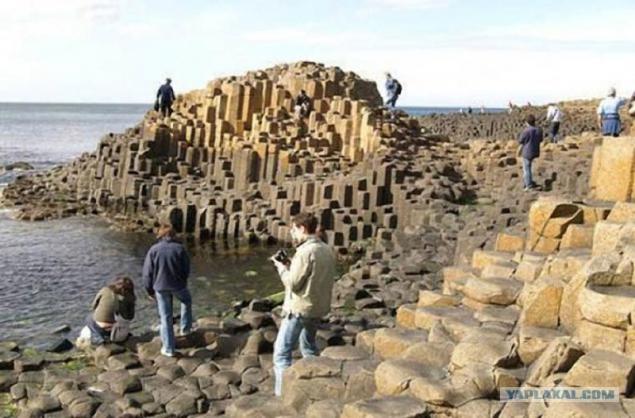
10 Ice flowers
Simply put, ice flowers - a layering of ice particles around the base of some plants and wood. When the temperature around the plant below the freezing point, and the internal temperature - no, the water is drawn to the surface. This leads to the fact that the breakable connections ice ejected outside where finishes the formation of "flower". Thus, they do not quite look like flowers, more on the leaves, but it is very interesting to watch.

Source:
Will 10 ph and a few letters.
taken away
1. Volcanic lightning
If someone asks you to name two of the coolest things you've ever seen in nature, your answer will be "volcanoes and lightning." Or perhaps, "lightning and volcanoes", but only these two options - that's a fact. But nature seems, is always looking for new ways to impress us, and that's why she went ahead and made the volcanic lightning reality. And yes, it looks exactly as it sounds - the lightning, which appear in the middle of a volcanic eruption. Scientists are not 100% sure why this happens, but the basic theory is that when a volcano erupts, it projects a positively charged dust into the atmosphere. These emissions react with the negative charges, whereby there is one) and the zipper 2) really cool picture.

02 Underwater icicles
When the sea surface freezes, for example, around the north and south poles, the process is such that on the lower side with pockets remain ice cold and salt water. This salt mixture is more dense than sea water underneath, and has a tendency to slowly sink to the bottom. The cold water below the cold salt mass freezes around it, when lowered, which leads to the appearance of giant icicles under ice surface. The technical name for this kind of thing - "ice stalactites," but there can be such a boring name for this exciting phenomenon? Hence the need for them to cool name "underwater icicle."

03 Penitentes
Here is another interesting ice formation, is very far from the submarine areas - high in the mountains. These prickly ice field called Penitentes, and each fragment can reach enormous heights - 4 meters. These frightening structure formed of snow in mountainous areas with low humidity, such as in the glaciers of the Andes. If conditions are right, the rays of the sun are hot, they really can sublimate the field of snow. This means that frozen water evaporates without ever becoming a liquid. This leads to small pockets in the ice, which due to its shape attracts even more heat. Sharp spikes - these are the areas of a snowy field, where the sun was not focused on the complete and utter destruction.

04Superyacheyki
If Superman was more powerful than any version of the flying man, the supercell stronger than normal storms.
Supercell are the most dangerous of the four main types of storms, but besides that it's scary, and then there is something to see. Fortunately, they are also very rare, and typically are in the central US spring. If you are ever lucky enough to come across such a thing, just remember one piece of advice: run the other way.

05 Fire rainbow
These colorful phenomenon often seen in the summer season in mid-latitudes, such as most of the United States. In fact, they are a great halo of refracted light, and, despite the name, does not have anything to do with fire, no rainbow. They appear only when the sun is at an angle of at least 58 degrees above the horizon, and when in the sky there are cirrus clouds, which are filled with plate ice crystals. The refraction of light is always parallel to the horizon, and due to the fact that the arc is very large, become visible only section, which is why it may look like clouds in the fire areas.

06Solnechnye dog
Here is another phenomenon associated with ice crystals in the atmosphere. As fiery rainbow, sun dogs are great glow in the sky as a result of the refraction of light, although in this case they seem to actually surround the sun. Sun dogs can be found on the two bright spots on either side of the glow. If these flash bright enough, they may look like three suns in the sky. And the good news is that it happens all the time all over the world, so that you can begin to see them if you look closely (especially when the sun is low on the horizon).

07Smerchi
Tornadoes also amazing, as their name: it is tornadoes that form over water. Because of this, they do not pose a serious threat, but if you happen to be in a boat, be careful, because these events can reach speeds up to 305 km / h. There is speculation that many mysterious shipwrecks, such as in the Bermuda Triangle, are simply the result of tornadoes. They can occur anywhere on the water, but it is especially common in the Florida Keys, where there may be 400 or 500 tornadoes a year.

08 Snow donuts
Do you remember as a kid when it was snowing, all tried to quickly roll a big snowball? Have you ever played in the snow, or sculptured snowmen. Nature has its own way of sculpting snow - snow donuts. This rare form is formed in the ideal conditions of temperature, during a snowfall or blowing snow. If part of the snow sticks together with the other part, the gravity and the wind do its part, and someone rolls himself. But in this case tend to collapse creates a donut shape, which can reach up to 66 cm in height.

09 Layers of basalt
At some point, Basalt looked at myself and realized that if he wanted to be noticed, it must be activated. And then organized into columns of basalt.
It should be recognized that on the surface it does not seem so impressive - the bars are not very interesting - but if you look all together, it's a beautiful sight. Unique education are the result of the fact that the lava flowed and cooled, perpendicular to the main flow.

10 Ice flowers
Simply put, ice flowers - a layering of ice particles around the base of some plants and wood. When the temperature around the plant below the freezing point, and the internal temperature - no, the water is drawn to the surface. This leads to the fact that the breakable connections ice ejected outside where finishes the formation of "flower". Thus, they do not quite look like flowers, more on the leaves, but it is very interesting to watch.

Source:




